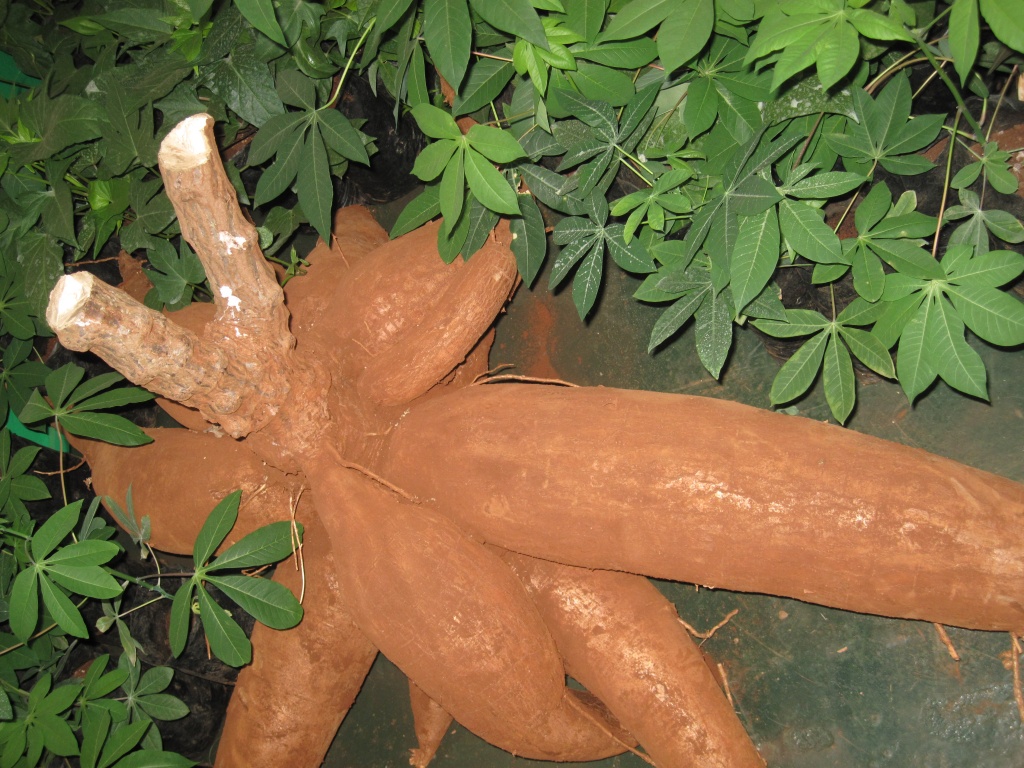Ebwana Tereka, the new cassava variety unveiled by Kenya Agricultural Livestock and Research Organisation during the Nairobi International Trade Fair at Jamhuri Grounds. Photo: Oyugi Zablon.
Kenya Agricultural Livestock and Research Organisation (KALRO) has availed Ebwana Tereka, new cassava variety that has a potential of yielding over 17 tubers per tree with maturity range of between six and twelve months.
According to the tissue culture experts at the agricultural research based organization, the cassava variety has been tested and found free of deadly cassava diseases like cassava mosaic disease and cassava brown streak.
“We take samples of various cassava varieties from farmers, take them to our labs and screen them for any diseases. The infected ones are discarded while the healthy ones are developed,” said Ms. Penina Mwisa, tissue culture expert-KALRO.
Ebwana Tereka like any other type of cassava should be planted and propagated by their cuttings. The cuttings should me made one feet with about six nodes. Farmers are therefore advised to prepare their land well before planting since cassava is a poor weeds competitor.
During planting the cuttings should be inserted into a well prepared soil at 45 degrees leaving two nodes above the soil,” said Mr. Philip Ikholi, another tissue culture expert-KALRO adding that farmers should not be worried about the right type of the soils for cassava including Ebwana Tereka since cassava can do well in any type of soil.
Spacing for this variety should be one by one metre in between the seedlings and the lines. Generally, cassava is an important crop in subsistence and commercial farming, as it requires few production skills and inputs.
READ ALSO: High starch-yielding Katuni cassava earns more for arid farmers
READ ALSO: Understanding Cassava brown streak
READ ALSO: Jobless youth turns cassava root into a Sh500,000 business venture
According to Ikholi, weeding Ebwana Tereka cassava should be vigorous within the first three months before it starts producing tubers. Thereafter weeding should be done by hand, uprooting the weeds gently to avoid interfering with the developing tubers.
Ebwana Tereka can save many from pangs of famine given it can be harvested for over two years if proper agronomical practices are observed and given protection against any form of destruction.
Today cassava is grown on an estimated 80 million hectares in 34 African countries. It is drought tolerant and produces reasonable yields under adverse conditions. Most important is its ability to remain in the soil as a famine reserve.
Other factors that make cassava popular with small-scale farmers, particularly in Africa, are that it requires little labour in its production and there are no labour peaks because the necessary operations in its production can be spread throughout the year, and its yields fluctuate less than those of cereals.

















Comments powered by CComment